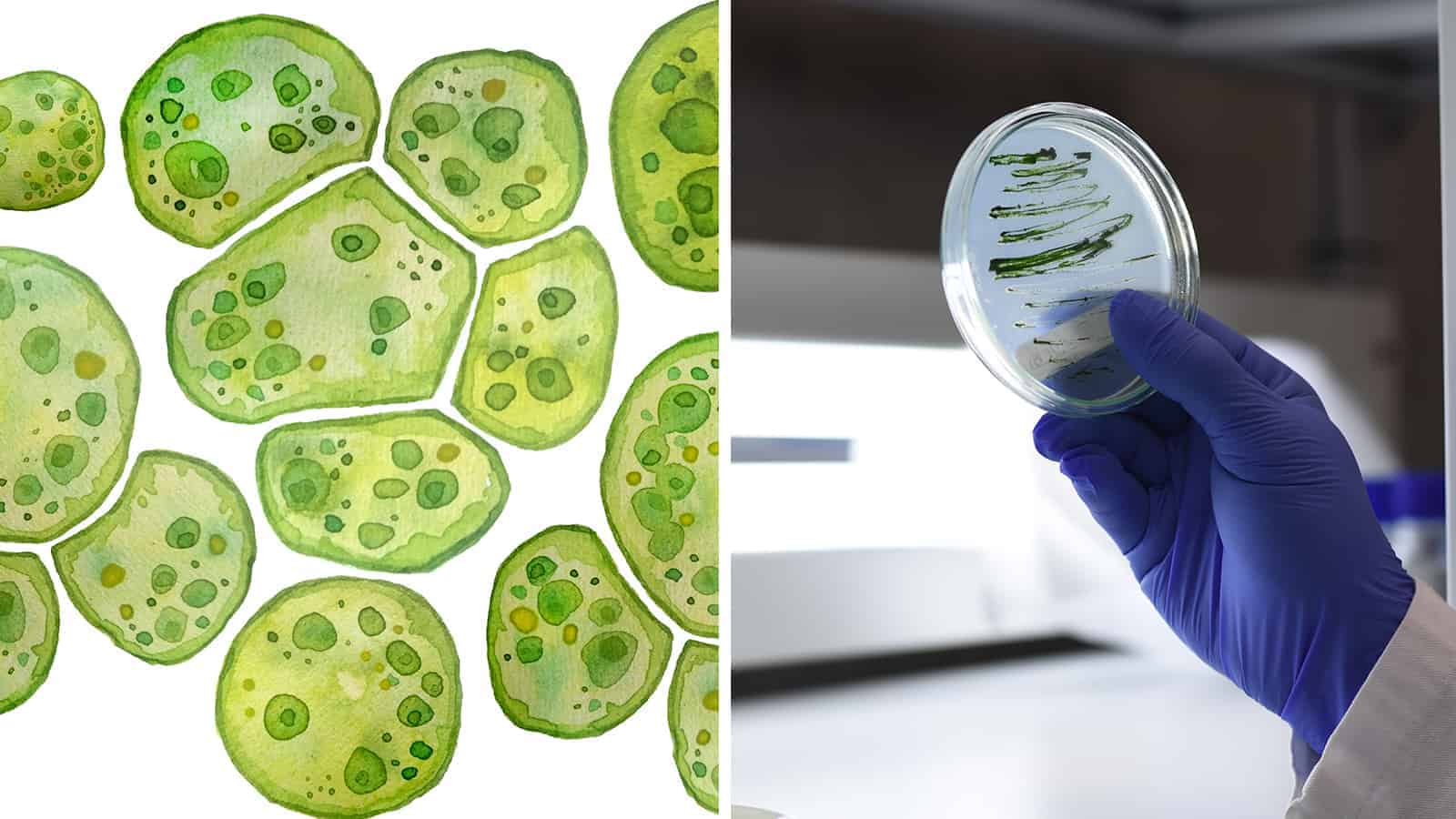A new study by Nanyang Technological University, Singapore (NTU Singapore) scientists reveals how microalgae generate energy. This type of algae coats the surface of ponds and seas and could improve artificial photosynthesis efficiency. In turn, the microalgae would generate energy and reduce waste simultaneously.
The research found that covering algae protein with liquid droplets boosts the algae’s photosynthetic and energy-converting properties. This process results in an efficiency boost of 3x compared to previous methods. Energy generates when the algae undergo photosynthesis, the process by which plants and some bacteria turn sunlight into chemical energy.
Artificial photosynthesis replicates this process by using a light-harvesting device to generate energy. The microalgae absorb the light and use it for energy, just like plants. This method provides an alternative way to produce electricity that doesn’t require fossil fuels or natural gas.
Converting sunlight to electricity takes an enormous amount of energy. However, boosting this conversion rate with microalgae could make artificial photosynthesis a viable, scalable way to produce energy.
The research, led by Assistant Professor Chen Yu-Cheng from the School of Electrical and Electronic Engineering, investigated a specific protein found in red algae. These proteins, called phycobiliproteins, absorb light in algae cells to start photosynthesis and generate energy.
Phycobiliproteins harness energy from across the spectral range of light wavelengths, including those not absorbed well by chlorophylls. Then, these proteins convert the energy into electricity.
Asst Prof Chen said in a press release:
“Due to their unique light-emitting and photosynthetic properties, phycobiliproteins have promising potential applications in biotechnology and solid-state devices. Boosting the energy from the light-harvesting apparatus has been at the center of development efforts for organic devices that use light as a power source.”
 Scientists Discover How to Generate Energy from Microalgae
Scientists Discover How to Generate Energy from Microalgae
The idea of using microalgae as a potential source of biological energy continues to grow in popularity. As climate change becomes increasingly more apparent, scientists have been ramping up efforts to generate energy sustainably. Since algae don’t produce toxic byproducts in manufacturing, it could provide the world with clean energy on a mass scale. Solar panels, in comparison, still require fossil fuels to produce.
The research builds upon NTU’s commitment to sustainability included in its 2025 strategic plan. The plan aims to understand, document, and address humanity’s impact on the planet.
The findings have been published and chosen as the cover of the scientific journal ACS Applied Materials Interfaces.
Microalgae soak up sunlight and transform it into chemical energy. The research team discovered a way to encase red algae in tiny liquid crystal droplets to generate power more efficiently. Measuring only 20 to 40 microns in size, the micro-droplets help enhance photosynthesis, producing more energy.
This reaction occurs when light hits the droplets, traveling around their curved edges and getting trapped for long periods. Known as the “whispering-gallery mode,” the natural phenomenon allows more time for photosynthesis to occur, amplifying the energy potential.
Electrodes can then capture this energy like an electrical current created by photosynthesis in the form of free electrons.
“The droplet behaves like a resonator that confines a lot of light,” said Assistant Prof Chen. “This gives the algae more exposure to light, increasing the rate of photosynthesis. A similar result can be obtained by coating the outside of the droplet with the algae protein too.”
“By exploiting microdroplets as a carrier for light-harvesting biomaterials, the strong local electric field enhancement and photon confinement inside the droplet resulted in significantly higher electricity generation,” he said.
Could Algae Replace Solar Panels in the Future?
The research team says the droplets can be mass-produced to generate energy, making them affordable and commercially viable. Asst Prof Chen said that most algae-based solar cells produce 20–thirty microwatts of electricity per square centimeter (µW/cm2). The NTU algae-droplet experiment increased energy production by a minimum of 2-3x, compared to the energy generation of the algae protein alone.
However, researchers say the using algae to generate energy still presents some challenges. Artificial photosynthesis can’t yet compete with solar-powered energy sources, like solar panels, in terms of efficiency. Solar panels typically have 15 to 20% efficiency ratings, while scientists estimate artificial photosynthesis efficiency at 4.5%.
Assistant Prof Chen said: “Artificial photosynthesis is not as efficient as solar cells in generating electricity. However, it is more renewable and sustainable. Due to increasing interest in environmentally-friendly and renewable technologies, extracting energy from light-harvesting proteins in algae has attracted substantial interest in the field of bio-energy.”
But, Chen believes that “algae farms” could provide a solution to this problem. Combining mass-produced algae in bodies of water with larger liquid crystal droplets could create floating power generators. Since the larger droplets would generate more energy, this method could perhaps replace solar panels.
“The micro-droplets used in our experiments have the potential to be scaled up to larger droplets which can then be applied to algae outside of a laboratory environment to create energy. While some might consider algae growth to be unsightly, they play a significant role in the environment. Our findings show that there is a way to convert what some might view as ‘bio-trash’ into bio-power,” said Assistant Prof Chen.
 Final Thoughts on a Microalgae That Could Generate Energy on a Mass Scale
Final Thoughts on a Microalgae That Could Generate Energy on a Mass Scale
Scientists across many fields have been researching ways to produce sustainable energy on a commercial scale. It seems they’ve made a breakthrough with their recent discovering of microalgae’s ability to generate energy. Scientists from NTU Singapore found that encasing algae in liquid crystal droplets amplified energy production by 2-3x. Lead researcher, Assistant Prof Chen, said that creating larger droplets in algae farms would further increase this effect.
The team believes this method could even match or outpace the energy production of solar panels. Since they currently require fossil fuels to make, they release toxic byproducts in manufacturing. However, microalgae can provide a clean form of energy using natural processes, making it the better option.
Can you imagine your home one day running on energy derived from algae? It sounds strange, but it’s a possibility in a future powered by sustainable energy.


















